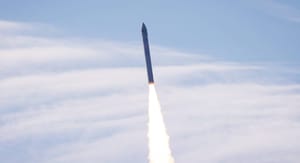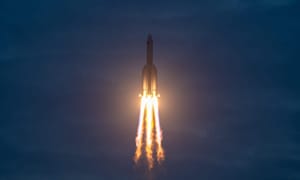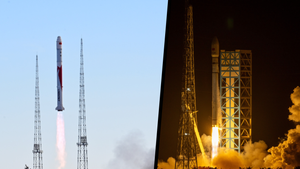
At 14:42 pm China Standard Time, or 06:42 am Universal Coordinated Time, on August 6th, the first batch of satellites for the Shanghai-backed Qianfan mega-constellation was sent skyward! This first batch of 18 satellites were sent to a polar orbit atop of a Long March 6A from the Taiyuan Satellite Launch Center.
The Qianfan (千帆) mega-constellation, formerly called G60 Starlink, is operated by Shanghai Spacecom Satellite Technology, which is partly backed by the municipal government of Shanghai. Qianfan is also part of Shanghai's plan to foster a strong space industry between 2023 and 2025.
Qianfan/G60 satellite render by CCTV pic.twitter.com/NizMHjeqJ0
— Phazzee 🐼🚀 | 中国航天 🇨🇳 | 🇵🇸🏳️⚧️🏳️🌈 (@PhazzeeYeehaw) August 6, 2024
Each Qianfan satellite is believed to weigh 300 kilograms with a 'flat pack' design to fit as many satellites as possible inside the rocket fairing. For maneuvering on orbit, each satellite has an electric hall-effect thruster burning krypton to generate 20 millinewtons of thrust, with a specific impulse of 1,385 seconds.
For 2024, 108 satellites are planned to be launched, possibly for five more launches this year if they are launched in groups of 18. Longer-term plans for the constellation will have it provide regular coverage of China by the end of 2025, and regular coverage worldwide by the end of 2027. By the end of 2030, 15,000 satellites are planned to be on-orbit.
Qianfan is one of three mega-constellation plans currently being pursued in China. The other two plans are the state-backed GuoWang, which plans to be comprised of 13,000 satellites, and LandSpace's joint venture with Hongqing Technology called Honghu-3, which aims to have 10,000 satellites. These three constellations would have China operating 38,000 satellites in low Earth orbit.
This launch was also the 7th launch of the Long March 6A, and the 214th launch for the Shanghai Academy of Spaceflight Technology. For the Long March launch vehicle family, this was the 530th launch. This was also the 35th launch from China this year, as the country hopes to perform 100 launches in 2024.

What is the Long March 6A?
The Long March 6A is one of the newer rockets from the Long March series of launch vehicles to debut in recent years, as it first flew in March of 2022. It is manufactured by the Shanghai Academy of Spaceflight Technology, who also manufacture the Long March 6 and 6C.
It is believed that the Long March 6A is capable of delivering 4,500 kilograms to a 700-kilogram sun-synchronous orbit. A higher payload capacity is believed to be available for lower-altitude sun-synchronus orbits, but this has not been widely shared.

The first-stage is powered by two YF-100 engines to generate a combined thrust of approximately 244 tons of thrust, while burning rocket-grade kerosene and liquid oxygen. The first-stage is reportedly 3.35 meters in diameter. The Long March 6A's first-stage is augmented by four solid rocket boosters attached to the side of the vehicle. These solid rocket boosters reportedly generate 124 tons of thrust each burning their solid propellant, each booster is also believed to be 2 meters in diameter. The solid rocket boosters generate a combined thrust of 492 tons of thrust. Combined with the first-stage they generate a total of 736 tons of thrust.
The second-stage is powered by a single YF-115 engine generating 18 tons of thrust burning rocket-grade kerosene and liquid oxygen. The second-stage is believed to be 3.35 meters in diameter, like the first stage.
On the launchpad, the rocket reportedly weighs 530,000 kilograms and is fifty meters tall. The Shanghai Academy of Spaceflight Technology has not shared the burn time for either of the stages or solid booster, at the time of writing.



